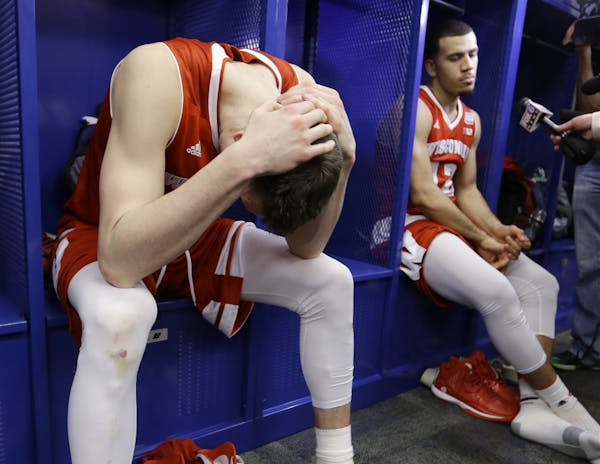More than 5,000 names fill the Gophers' list at the start of each football recruiting cycle. To whittle that down, the staff studies game film to assess talent, and uses social media to gauge a recruit's personality.
"Several kids each year don't make it onto our list to start receiving our mail and stuff because of the way they act on Twitter, the language that they use and some of the videos that they post," Gophers recruiting director Billy Glasscock said.
Glasscock's staff typically follows potential recruits on Twitter and Instagram and sends a friend request on Facebook. Once connected, this is how teams often communicate with recruits, sending promotional material and information, etc.
Glasscock said his staff is monitoring social media, particularly Twitter, constantly. His advice to recruits is not to tweet anything they wouldn't say to their own mother or grandmother. But he said the staff also nixes "kids that come off tremendously selfish, where it's all about me. We don't want to disrupt the team chemistry that we've developed here."
The Twitter era has added whole new levels of hype to the recruiting process.
At last check, Elijah Thomas, a high school senior from Lancaster, Texas, had more than 6,600 followers of his Twitter account (@edotcash). The number grew throughout his recruiting process, as fans from various schools tracked the 6-9 center's every move, practically begging him to join their team.
In October 2013, more than a year before he announced his final decision, he declared that he had narrowed his list — to 24 schools. He unveiled them on Twitter, eight at a time, over three days. And the anticipation kept building right up until he signed with Texas A&M.
Thomas couldn't be reached for comment, but he is just one example of a modern high-profile recruit.
"It's one thing to be recruited highly, but I think it really gives these guys a big head," former Gophers guard Austin Hollins said. "It makes them think they're a lot better than they are, and makes them think they're entitled to something when they get to college."
Ten years ago, high-profile recruits might have felt the arm-twisting from fans if they got recognized going out to eat, for example. Otherwise, it was a quieter existence. Now, fans are filling these recruits' Twitter feeds with hype and hysteria at all hours.
"I've talked to athletes who said they literally don't want to announce their commitment because they don't want to lose all their Twitter followers from other schools," said Jimmy Sanderson, author of "It's A Whole New Ballgame: How Social Media is Changing Sports."
For recruits, much of this online adulation isn't built to last. As soon as they pick one school, they're going to hear from the disappointed fans. Diamond Stone, a 6-10 center from Milwaukee, chose Maryland over Wisconsin this spring, then tweeted congratulations to Duke center Jahlil Okafor after the Blue Devils defeated the Badgers in the championship game.
These were among the replies in Stone's Twitter feed:
"@Diamond_Stone33 too stupid to be a Badger."
"@Diamond_Stone33 can't spell ACT."
"@Diamond_Stone33 you only wanted Duke to win because it's easier to pronounce than Wisconsin."
Stone later said in a radio interview that he ignores fan feedback by turning off his Twitter notifications. For many athletes in the social media era, this is the new price of fame.
Star Tribune staff writer Amelia Rayno contributed to this story.
Reliever Ryne Stanek acquired by Mets from Mariners for minor league outfielder Rhylan Thomas
Singing, ceremonies and straw hats: Olympics opening ceremony in Tahiti centers Polynesian culture
Latest tests show Seine water quality was substandard when Paris mayor took a dip

